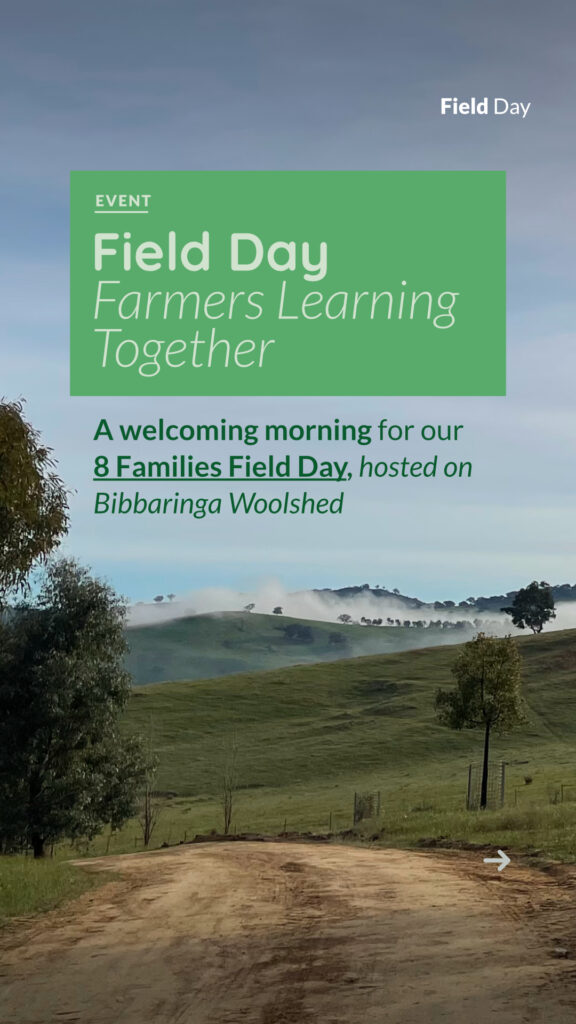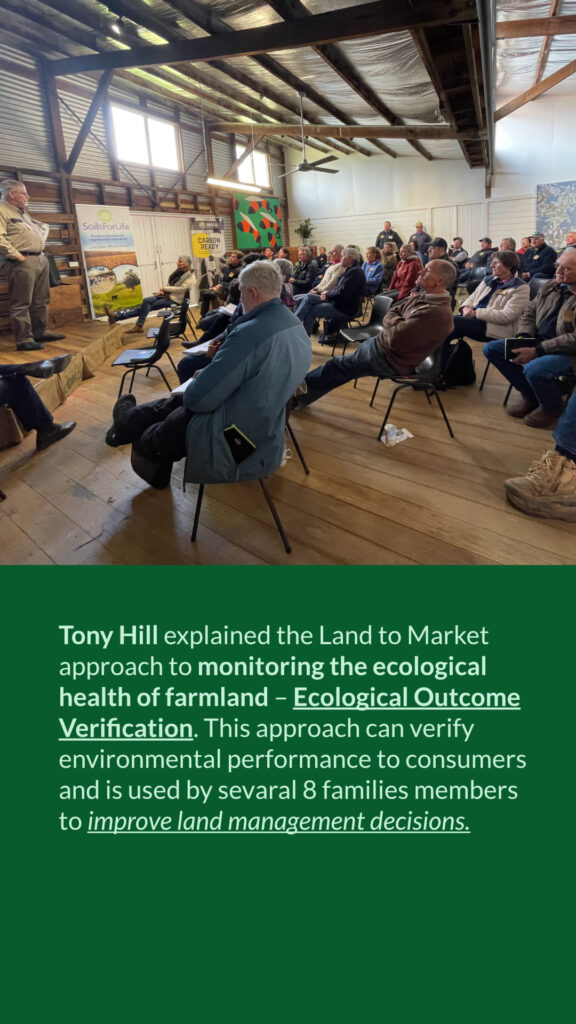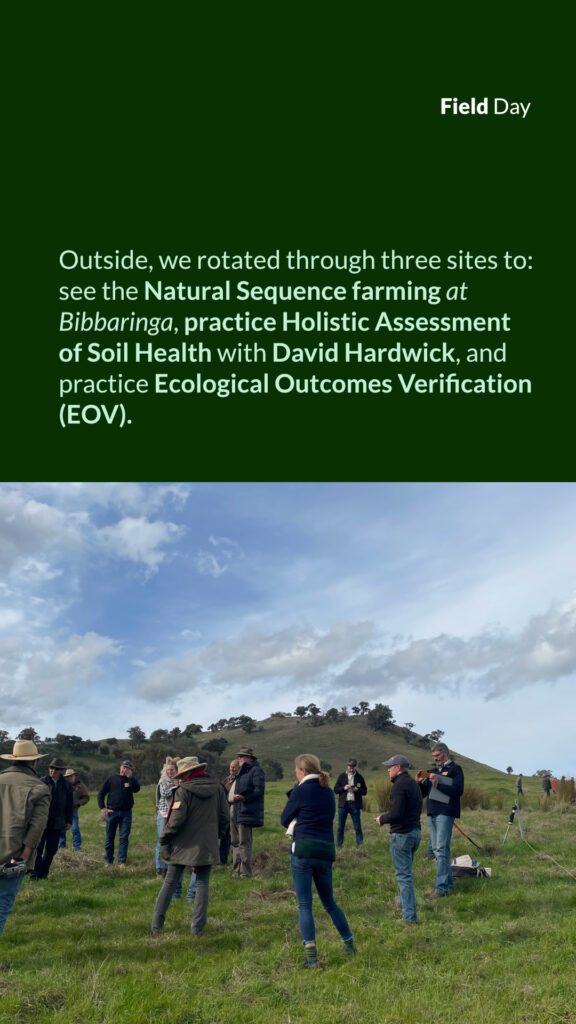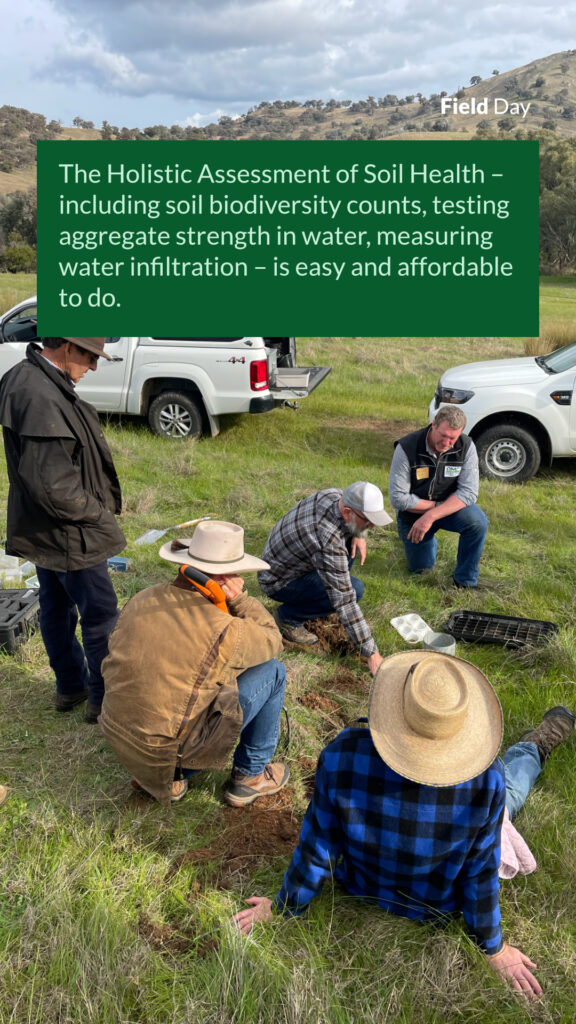A field day with the 8 Families group
Insights from a farmer support group
Soils for Life and the 8 Families, a recent Soils for Life case study, hosted a field day at Bibbaringa Woolshed Bowna this spring.
For 10 years, this group of diverse producers – including cattle, sheep, and chickens – have been supporting each other to plan and make decisions about resilience.
The day began with a heartfelt dialogue amongst the 8 Families and the audience.
The 8 Families shared insights on what helped them create a meaningful support group for making decisions to increase environmental financial and personal resilience in the face of climate change.
They discussed how their shared decision-making processes and context of Holistic Management was crucial to their group’s success. As well as the increasingly elaborate cake for morning tea, every six weeks when they meet.
“Having the accountability of each other is priceless” – Nick Austin, Mundarlo.
The interactive day was also an opportunity to learn from experts. Dr Susan Orgill, our first presenter from SelectCarbon, explained the benefits of soil carbon, as well as farming practices that increase soil carbon flows, including plant diversity, biological soil amendments, grazing management.
Using data from 15 years of grazing management at Bibbaringa, Peter Richardson (Maia Grazing CEO) demonstrated how grazing in higher density with high rates of pasture recovery actually leads to better yield than set stocking. He also showed how Bibbaringa doubled their soil carbon in 15 years.
Tony Hill explained the Land to Market approach to monitoring the ecological health of farmland – Ecological Outcome Verification. This approach can verify environmental performance to consumers and is used by several 8 Families members to improve land management decisions.
Outside, we rotated through three sites to: see the Natural Sequence farming at Bibbaringa, practice Holistic Assessment of Soil Health with David Hardwick, and practice recording all 15 indicators of Ecological Outcomes Verification (EOV), such as such as looking for insects and depth of litter.
David Hardwick, from Soil, Land, Food, who led participants through a series of assessments for soil biology and structure, says, “Soil is an essential asset, and in only five hours a year, you can monitor how your most valuable asset is functioning.” The Holistic Assessment of Soil Health – including soil biodiversity counts, testing aggregate strength in water, measuring water infiltration – is easy and affordable to do.
Gill Sanbrook, of Bibbaringa, explains the changes she’s observed in her landscape as Natural Sequence Farming has slowed the flow of water. In addition to contours, Gill places compost in her constructed ‘fanning channels’ to help nutrients flow with the water into the landscape.
This project is delivered by Soils for Life through funding from the Australian Government’s National Landcare Program.










